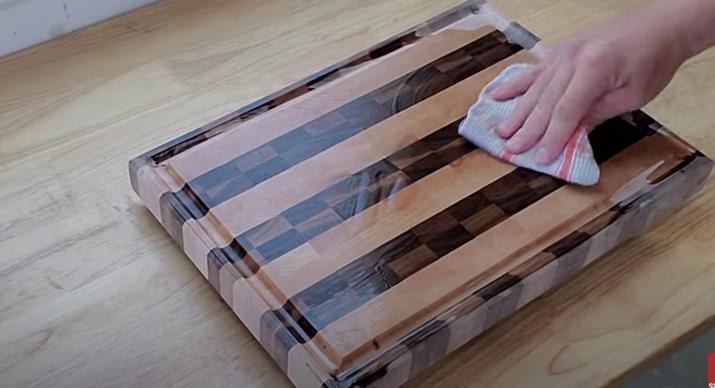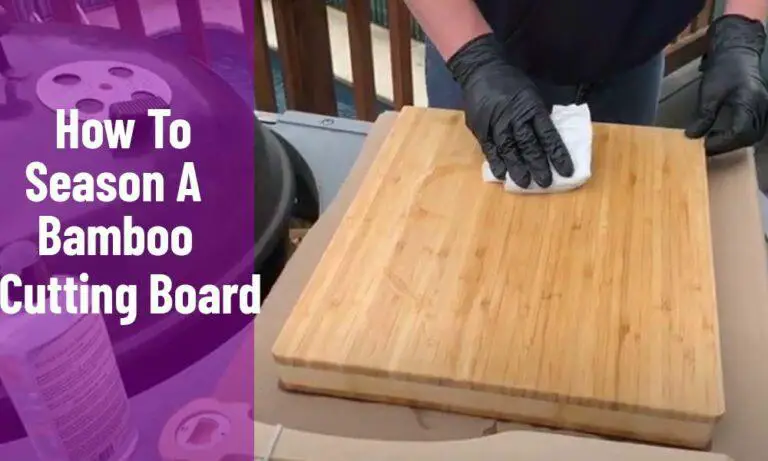Are End Grain Cutting Boards Better? Know The Truth Fact

End grain cutting boards are increasingly popular among cooks and home chefs for their superior durability and quality. But are end grain cutting boards better than other types of cutting boards?
Yes, end grain cutting boards are better than other types of cutting boards because they are more durable, gentler on knives, and have a self-healing property that helps prevent bacteria growth. Additionally, they tend to have a visually appealing pattern and are less likely to show knife marks than edge or face grain cutting boards.
However, this blog will explore the benefits of end-grain cutting boards and discuss why they might be the better choice for your kitchen. I’ll look at the pros and cons of end grain cutting boards and compare them to other materials so that you can decide if they make the best choice for you.
What Are End Grain Cutting Boards?
End grain cutting boards are formed by cutting the wood at the grain’s end, resulting in a pattern of tiny, tight wood fibres. These cutting boards are thicker and heavier than edge-grain or face-grain cutting boards, and they are noted for their durability and resistance to knife marks and scratches.
End grain cutting boards are created by placing little wood fibres perpendicular to the board’s surface, resulting in a self-healing effect when blades are used on the surface. Because the knife blade slides between the fibres, somewhat cutting them, the board lasts longer and requires less maintenance than other types of cutting boards.
Professional chefs frequently utilize end-grain cutting boards because they are soft on knives and assist in keeping them sharp. They’re also popular in home kitchens because they’re attractive and can be used as a serving board for cheese, bread, or other little bites.
Are End Grain Cutting Boards Better

Yes, end-grain cutting boards are generally better than other types of cutting boards, such as edge grain or plastic. End grain cutting boards are popular for many home chefs and professional cooks. They are made of wood, and the grain of the wood is cut so that the end grain is exposed. It makes them highly durable and resistant to knife cuts.
The end grain naturally self-heals after use, making them an excellent choice for heavy-duty chopping boards. The unique pattern of the end grain also makes them visually appealing. They are also straightforward to clean and maintain, making them an excellent choice for anyone looking for a cutting board that can stand the test of time.
Why Are End Grain Cutting Boards Better?
Most people think that end-grain cutting boards are better than other types, such as edge-grain or plastic boards. Here are some of the reasons:
Durability:
End grain cutting boards are very durable and can take a lot of use for a long time. The knife blade hits the end grain of the wood, which absorbs the force. It keeps the board from getting scratched or dented.
Knife-Friendly:
End-grain cutting boards are easier on your knives because the knife blade cuts between the wood fibres instead of against them. They also help your knives stay as sharp as possible over time.
Self-Healing:
The wood fibre’s end grain helps seal any cuts or nicks made using the board. That lets the board heal itself over time.
Hygienic:
End grain cutting boards are more hygienic than other boards because they don’t hold bacteria or other harmful organisms. The wood fibres of the end grain can soak up any liquids or moisture on the board. It keeps bacteria from growing.
Overall, end grain cutting boards are a good choice for anyone serious about cooking and who wants a durable cutting surface, easy on knives, and clean.
What Is The Advantage Of An End Grain Cutting Board?
Many chefs prefer end grain cutting boards due to their numerous benefits.
- They are more durable than other types of cutting boards, as they are less prone to knife marks.
- The end-grain wood fibres absorb the knife’s impact, preventing scratches and dents.
- These cutting boards are also easier to maintain and require less frequent sharpening of knives.
- Additionally, end grain cutting boards are much safer to use as they are gentler on knives, resulting in less risk of injury.
- Furthermore, these boards are aesthetically pleasing and can be used as a decorative pieces in the kitchen.
All these advantages make end-grain cutting boards a popular choice.
Disadvantages of End Grain Cutting Boards
End grain cutting boards are considered the best chopping boards available. However, they have a few cons associated with them. One of the main disadvantages of end grain boards is their high cost. They are usually more expensive than the other types of boards and often require frequent oiling.
Moreover, they are heavier and more challenging to move than other boards, which makes them less portable.
Additionally, end grain boards are more prone to warping and cracking over time due to the high moisture content in the wood. Finally, cleaning requires more effort as the wood’s fibres can trap food particles and bacteria.
How to Choose the Right End Grain Cutting Board

To choose the right end grain cutting board, consider size, durability, material, and care carefully. Here are some essential things to think about when choosing an end-grain cutting board:
Size:
Think about what size cutting board you need to be based on how you cook. You might want a giant cutting board if you cook a lot or have a big family. But a smaller board might be better if you have little room to store things.
Thickness:
The thickness of the board is important. A thicker board is more durable and will last longer. However, it may also be heavier and harder to move around.
Material:
Cutting boards with end grain can be made from wood, bamboo, or plastic, among other things. Most people use wooden cutting boards because they are easy on knives and kill germs naturally. Bamboo cutting boards are good for the environment and last long, but they are more complex than wood and can make knives dull faster. Plastic boards are easy to clean and don’t weigh much, but they are accessible to scratch and cut.
Maintenance:
End grain cutting boards must be regularly taken care of to stay in good shape. Wooden boards must be oiled often to prevent drying and cracking. You can clean bamboo and plastic boards with soap and water but you can’t oil them. When choosing a board that fits your lifestyle, consider how much upkeep it needs.
Aesthetics:
There are many different styles of end-grain cutting boards, and the one you choose should match your style and your kitchen’s decor. Look for an excellent design and wood grain board to make your kitchen look flawless.
In short, the right-end grain cutting board should be strong, easy to clean, and the right size for your needs. When choosing a cutting board that will serve you for years, think about the material, how it looks, and how you cook.
Alternatives to End Grain-Cutting Boards
End grain cutting boards are a popular choice for many kitchen tasks. However, there are other options available. Edge grain and face grain cutting boards are other alternatives. Edge grain boards are made with the grain running parallel to the board’s length. Face grain boards are made with the grain running perpendicular to the board’s length.
Both options are less expensive than end grain boards, but they may need to be replaced more frequently due to wear and tear. Plastic cutting boards are also an option, but wood boards are less durable than they are and should be replaced more often.
People Also Ask
What are the benefits of an end grain cutting board?
End grain cutting boards are strong and durable, have natural self-healing qualities, and are gentle on knives.
How do end-grain cutting boards compare to other types?
End grain boards are more durable than other types since the grain runs vertically, and each chop won’t affect the board’s structure. End grain boards also have more grip, making them less likely to slip. They can also be refinished more easily.
Are end-grain cutting boards more sanitary?
Yes, end-grain cutting boards are more sanitary than other types of cutting boards because the wood fibres close up, trapping and preventing bacteria from spreading. The end grain also makes it easier to cut and clean food.
Are end-grain cutting boards more expensive?
Yes, end-grain cutting boards are more expensive than traditional ones. They cost more because of the extra labour and materials involved in their construction.
How should an end grain cutting board be cared for?
End grain cutting boards should be washed and dried immediately after use. They should also be oiled regularly, as this helps maintain the wood’s moisture and prevents cracking and warping. Lastly, they should not be stored in damp areas or standing water.
Final Thought
End grain cutting boards are undoubtedly an excellent choice for home and professional use. But are end grain cutting boards better than other types of cutting boards? Yes, end-grain cutting boards are really better than other types of cutting boards. They provide a sturdy, durable surface that is resistant to knife wear and tear and offers a stylish, attractive look.
Plus, they are easy to clean and maintain, making them an excellent investment for anyone who wants to invest in a quality cutting board. While end grain boards may be a bit more expensive than other types, they are worth the price due to their long-term durability and performance.



